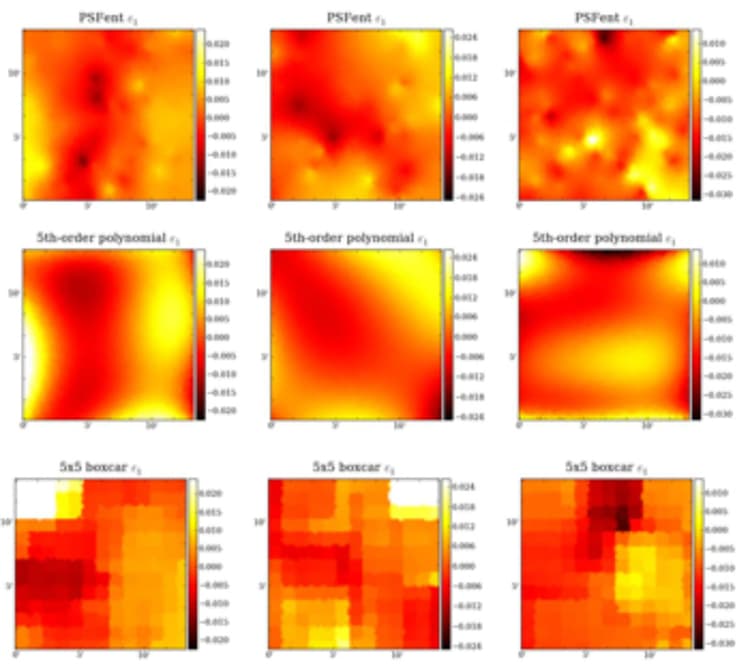An Interpolation Sensation for Image Relations

(Originally published by Stanford University)
July 17, 2012
In order to precisely characterize dark energy, the Large Synoptic Survey Telescope (LSST) will, among other techniques, use the patterns in the shapes of up to a billion galaxies to map out the effect of weak gravitational lensing of galaxy light over the history of the Universe. As LSST faithfully records the light from large patches of the sky, night after night, the distant galaxies will collectively reveal, in the small distortions of their shapes, the distribution of structure across the cosmos in space and time.

However, the observed shapes of galaxies are the result of the combined effects of their actual intrinsic shapes, the effects of weak gravitational lensing due to structure between the galaxies and Earth, and distortions created by light travelling through our atmosphere, the telescopes mirrors, lenses, filters, and CCD detectors. The full systematic impact of all of the atmospheric and optics effects on the measured shape - the so-called 'point spread function' or PSF - must be thoroughly understood in order to deduce the weak lensing and dark energy parameters, and this represents one of the most fundamental challenges of LSST dark energy science, as well as of smaller-scale, nearer-term projects such as the Dark Energy Survey.
One of the major advantages of LSST is that with a very large field of view and deep imaging, there will be thousands of stars per image with which the PSF can be reconstructed across the field. Since in the absence of distortions stars should appear circular, their observed deviations from that allow the PSF to be approximated. In a previous analysis led by KIPAC graduate student Chihway Chang, it was found that the varying atmosphere generates PSFs that vary over over small scales in a way that is more complicated than current techniques to model the PSF can adequately handle.
Now Chang and KIPAC alumnus Phil Marshall of Oxford University, along with colleagues from several institutions, have devised a new technique to interpolate the PSF across an image from sparsely sampled stars, and have shown that it will reduce the cumulative errors from LSST measurements of galaxy shapes and therefore in dark energy parameters. They call their algorithm PSFENT, and it is based on the maximum entropy method of model fitting, with the added ability to compare the model at the positions of stars in the field of view with those stars' shapes and iterate the process. In synergy with other areas of astrophysics, the technique was inspired by methods used to interpret maps of the cosmic microwave background radiation intensity.
The team quantified the effectiveness of PSFENT by using the LSST PhoSim pipeline, which faithfully simulates the effects of the atmosphere and telescope optics on LSST sky images. Light from stars was run through PhoSim for both a realistic distribution of stars within an image, and a distribution with a very large density of stars which would reveal the true PSF at every point in the image. They compared different techniques' ability to accurately reconstruct the PSF in the case of the realistic star distribution, and found that PSFENT resulted in a significant improvement over the other, more traditional techniques considered.
Chang, Marshall, and colleagues then pushed the analysis through to determine the cumulative errors in years of LSST's observing that would result from each of the PSF reconstruction techniques. The find that, for example, use of PSFENT could meet LSST's weak lensing systematic error target with as few as half the total exposures as with a more traditional technique. Although the PSFENT technique is very promising, future computational challenges include devising algorithms that are as effective as it but faster to implement, in anticipation of LSST's huge volume of data. In order to meet LSST's ambitious goals for dark energy measurements, continued merging of astrophysics and cutting edge computing will be necessary.
This work is described a paper submitted to the Monthly Notices of the Royal Astronomical Society and available from astro-ph at arXiv:1206.1383. Research at KIPAC is supported by the Department of Energy, the Kavli Foundation, the National Aeronautics and Space Administration, the National Science Foundation and Stanford University, as well as private donors. We are grateful to each of these sponsors for their trust and support.